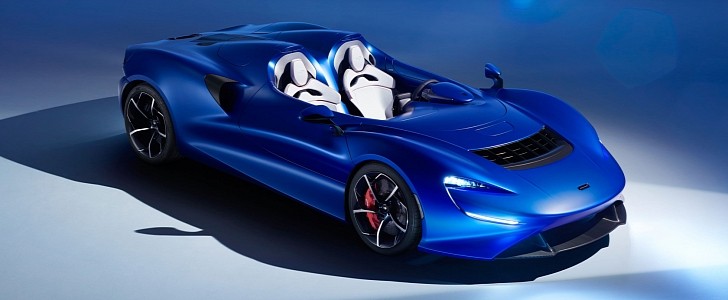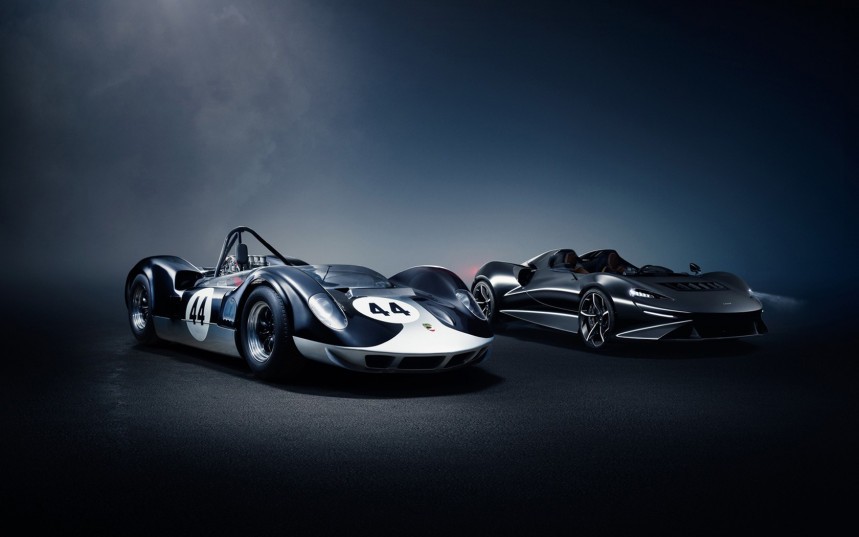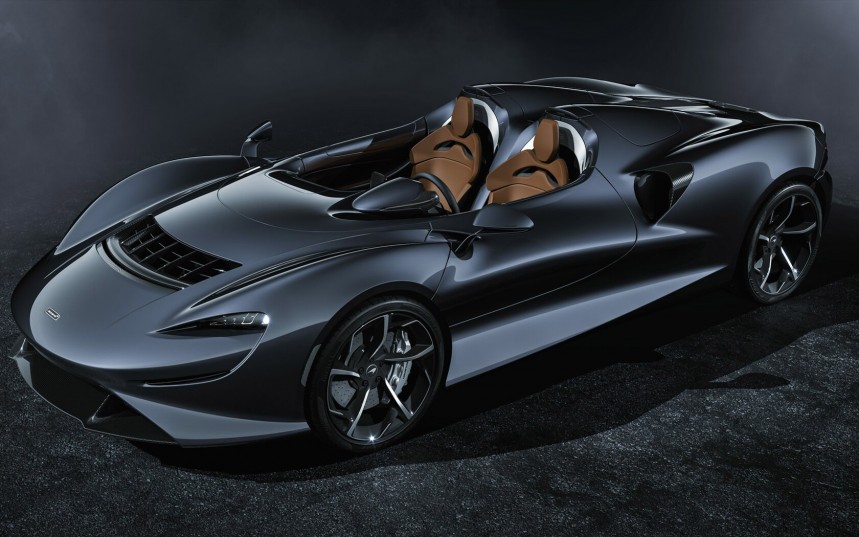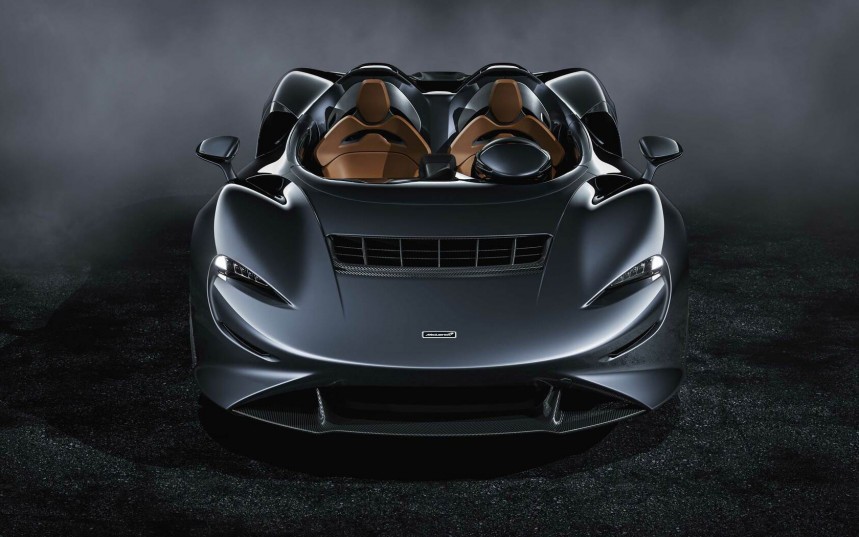In recent times, established supercar manufacturers have gone back to the roots by using open cockpit designs. While this gives drivers a more connected feel, the lack of a windshield can also be impractical. The new McLaren Elva takes a huge step in resolving that issue by introducing the world’s first invisible windshield technology.
Much like traditional speedsters, open-cockpit cars feature a roofless design, but the key difference is that the windshield is also removed, giving drivers a unique feeling that heightens every sensory input, much like the racing cars of the fifties and sixties.
Modern-day supercars that employ this body style are rare but highly appreciated, especially as track machines. One of the most recognizable in recent history is the Mercedes-Benz McLaren SLR Stirling Moss, a rare version of the SLR that was produced in only 75 units.
McLaren is a name that is synonymous with motorsport, particularly Formula 1, where it won eight constructors’ championship since the team was established by the legendary driver and designer Bruce McLaren, in 1963.
Their venture into road-legal supercars started in the early ‘90s with the epic McLaren F1, which broke the record for the fastest production car ever built by that time.
In modern times, supercars like the MP4-12C, P1, or Senna have solidified McLaren’s position as one of the top manufacturers of vehicles that perform flawlessly both on public roads and on the race track.
Their latest model is the innovative Elva, the first open cockpit car in the British carmaker’s history. It is an aerodynamic work of art that pushes the boundaries of physics aided by the marvelous 4.0-liter M840TR twin-turbocharged V8 shared with the Senna.
The McLaren Elva’s avantgarde open cockpit design pays tribute to the ‘60s racecars designed by Bruce McLaren himself, the M1A and M1B.
The lack of a roof, side windows, and windshield give drivers the ultimate driving experience, similar to that of an open-wheel racecar.
Though protection against the elements can be provided by the use of a helmet, which is mandatory on the vast majority of race tracks, the engineers at McLaren came up with an innovative technology that protects the driver and passenger from the oncoming airflow even without the use of a helmet, goggles or sunglasses.
It is called the Active Air Management System (AAMS), and creates a virtual windshield by channeling air through the nose of the Elva and pushing it out at high velocity through the front clamshell vent, ahead of the occupants, before being directed up and over the cockpit by the oncoming air.
The air is channeled using a large central inlet situated above the splitter and is directed over the cockpit at a 130-degree radius.
This is achieved using a network of transverse and longitudinal carbon fiber vanes installed across the hood.
A discreet carbon fiber deflector is placed at the edge of the large hood outlet, which raises and lowers vertically when the system is activated, to deflect the air over the cockpit as the speed increases.
The goal of the engineers was to create a system that offers occupants the comfort of a normal convertible by creating this virtual canopy at speeds of around 100-120 kph (62-75 mph).
It switches off automatically when cruising at low speeds in city driving conditions or at higher speeds, like on a racetrack, where the airflow is directed to the engine. It can also be deactivated manually through a push of a button found in the cockpit.
The system is an example of the British carmaker’s innovative approach to modern design and makes the Elva an airflow-manipulating beast,capable of offering the most thrilling driving experience of any road-legal McLaren ever made.
Modern-day supercars that employ this body style are rare but highly appreciated, especially as track machines. One of the most recognizable in recent history is the Mercedes-Benz McLaren SLR Stirling Moss, a rare version of the SLR that was produced in only 75 units.
McLaren is a name that is synonymous with motorsport, particularly Formula 1, where it won eight constructors’ championship since the team was established by the legendary driver and designer Bruce McLaren, in 1963.
In modern times, supercars like the MP4-12C, P1, or Senna have solidified McLaren’s position as one of the top manufacturers of vehicles that perform flawlessly both on public roads and on the race track.
Their latest model is the innovative Elva, the first open cockpit car in the British carmaker’s history. It is an aerodynamic work of art that pushes the boundaries of physics aided by the marvelous 4.0-liter M840TR twin-turbocharged V8 shared with the Senna.
The McLaren Elva’s avantgarde open cockpit design pays tribute to the ‘60s racecars designed by Bruce McLaren himself, the M1A and M1B.
Though protection against the elements can be provided by the use of a helmet, which is mandatory on the vast majority of race tracks, the engineers at McLaren came up with an innovative technology that protects the driver and passenger from the oncoming airflow even without the use of a helmet, goggles or sunglasses.
It is called the Active Air Management System (AAMS), and creates a virtual windshield by channeling air through the nose of the Elva and pushing it out at high velocity through the front clamshell vent, ahead of the occupants, before being directed up and over the cockpit by the oncoming air.
The air is channeled using a large central inlet situated above the splitter and is directed over the cockpit at a 130-degree radius.
This is achieved using a network of transverse and longitudinal carbon fiber vanes installed across the hood.
A discreet carbon fiber deflector is placed at the edge of the large hood outlet, which raises and lowers vertically when the system is activated, to deflect the air over the cockpit as the speed increases.
It switches off automatically when cruising at low speeds in city driving conditions or at higher speeds, like on a racetrack, where the airflow is directed to the engine. It can also be deactivated manually through a push of a button found in the cockpit.
The system is an example of the British carmaker’s innovative approach to modern design and makes the Elva an airflow-manipulating beast,capable of offering the most thrilling driving experience of any road-legal McLaren ever made.












